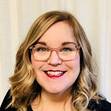Amy Sue Nathan's Blog: Women's Fiction Writers, page 14
August 22, 2016
Bethany Chase’s New Novel Results In A Great Read
Today we have author Bethany Chase on WFW!
I read Results May Vary in a weekend and it as just what I needed—classic women’s fiction that hits all the sweet spots—big changes in relationships, family, and friendships, and the promise of romance (for more than one character). Below, I love Bethany’s thoughts on plotting and pantsing—as I’m in the process of tackling some plotting myself! I also love Bethany’s advice on putting a new spin on an old idea!
Tell us what you think in the comments and p lease welcome Bethany to WFW!
Amy xo
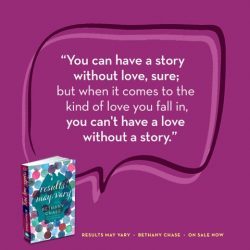
Bethany Chase’s New Novel Results in a Great Read!
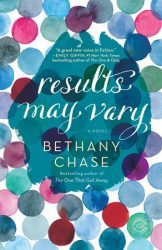 Amy: Congratulations on the publication of your second novel! Can you tell us us about the spark that ignited the idea for Results May Vary?
Amy: Congratulations on the publication of your second novel! Can you tell us us about the spark that ignited the idea for Results May Vary?
Bethany: A good friend of mine was studying abroad several years ago, when a mutual friend of hers with some of the people on her grad program came out to visit them. The guy was engaged to a woman back home, yet at the end of the night when they’d all been out drinking together, he waited until everyone had gone home and then made a pass at my friend’s gay roommate. I remember hearing the story and feeling so sad, both for this man who for whatever reasons did not feel able to live openly as his authentic self, and also for the woman he was locking in the closet with him, who was unaware of this aspect of him.
Amy: You used an accessible art world (in my opinion) as the backdrop for the story. Are you “into” art or artsy yourself? Where did Caroline’s career come from?
Bethany: I come from a family of artists, but my own passion for art didn’t really ignite until I was a junior in college, studying abroad in Europe and discovering all of the incredible museums and architecture there. After that, I was hooked. I spent most of my senior year taking art history classes, and considered pursuing the curatorial field before ultimately deciding against it. But my love for art and design stayed with me, and led me a few years after college to the right career for me–interior design. Working with creative people and on creative projects gives me tremendous satisfaction and joy.
Amy: I love the themes of acceptance and forgiveness (hard won) in the story. How did you make sure that Caroline didn’t end up bitter? Were you ever bitter on her behalf?
Bethany: I wasn’t, no. I’m not some Pollyanna type with a sunshiny outlook that never fails me; I’m as susceptible as anyone else to jealousy, impatience, frustration, resentment and so forth. But I think the key is making sure those emotions are transitory. I can’t stop myself from feeling them, but I can stop myself from dwelling on them and retaining them, because I think when grudges and bitterness get lodged inside you permanently, it can damage you as a person. It damages you, and it still doesn’t solve your problem or make you less hurt. So, writing from that place, I really wanted Caroline to reach forgiveness and acceptance, too.
Amy: What’s your writing style? Do you plot or pants or somewhere in between? What’s a habit or an item you can write without?
Bethany: I am a reformed pantser/born-again plotter. My first book, The One That Got Away, was mostly put together on the fly because I had no real idea what I was doing. I hadn’t started it with the goal of writing a novel; it started as a couple of scene sketches I wrote to amuse myself and then it developed from there. But with everything I’ve written since then, I’ve developed an outline, and now I can’t imagine doing it any other way. Inevitably certain things will change, drop out or get added as I write, but I do find that I need some sort of pre-existing path to follow. It helps me ensure that all my scene ideas and moments are relevant to the overall plot I’m trying to deliver.
Amy: What’s your best advice for aspiring women’s fiction authors in today’s publishing climate?
Bethany: Give a lot of thought to what makes your plots, your writing, and your voice as an author unique. There are just so many books out there, and both agents/editors and also readers are looking for something fresh and distinctive. A new plot idea is wonderful; but a new take on a familiar plot conceit is also terrific. You can add freshness and interest with your setting, your characters’ jobs, the array of characters you add, and so on. Make it your own–and make it something where the person reading your query letter, pitch letter, or jacket copy will say, “Oh wow–I haven’t seen something quite like this before.”
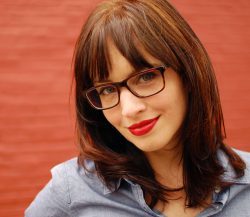 A native of Virginia’s Blue Ridge mountains, Bethany Chase headed to Williams College for an English degree and somehow came out the other side an interior designer. The craftsmanship and creativity that surround her in the design world are a continual inspiration for her novels, which include USA Today Bestseller The One That Got Away and the recently released Results May Vary. She lives with her lovely husband and occasionally psychotic cat in Brooklyn, three flights up.
A native of Virginia’s Blue Ridge mountains, Bethany Chase headed to Williams College for an English degree and somehow came out the other side an interior designer. The craftsmanship and creativity that surround her in the design world are a continual inspiration for her novels, which include USA Today Bestseller The One That Got Away and the recently released Results May Vary. She lives with her lovely husband and occasionally psychotic cat in Brooklyn, three flights up.Instagram: http://instagram.com/bethanychaseauthor/
Twitter: https://twitter.com/MBethanyChase
Facebook: https://www.facebook.com/bethanychaseauthor/
Pinterest https://www.pinterest.com/mbethanychase
“[Results May Vary] is nuanced and complex, an altogether addictive read. A novel that doles out both laughter and tears, in the best possible ratio.” — Kirkus Reviews
“A warm, witty, and wise novel. THE ONE THAT GOT AWAY announces the arrival of a great new voice in fiction.”– # 1 New York Times bestseller Emily Giffin
August 19, 2016
Time to Fall Back into Your Manuscript!
Vacation time is wrapping up, kids are going back to school, so you know what that means, right? It’s time to pull out the manuscript you set aside for sun and sand and sipping on umbrella drinks. Or if you’ve been sweating it out all summer with your pages, then maybe it’s time to see how your story will shake out when the leaves fall!
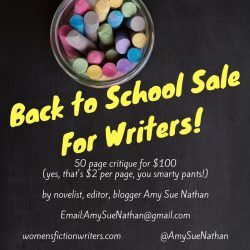
August 18, 2016
WFW Book Review: The Matchmakers of Minnow Bay by Kelly Harms
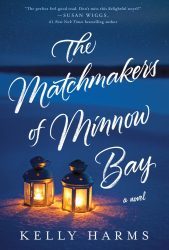
In The Matchmakers of Minnow Bay, Kelly Harms weaves together a small town and big dreams into a delightful and heartfelt tapestry of friendship, love, and getting what you deserve, in the way you least expect. I was hooked from page one, then laughed out loud and teared up while reading—exactly what I want from romantic women’s fiction. Kelly Harms is the real deal.
As you can tell, I loved this book! I’ve known Kelly since we were part of The Debutante Ball together in 2013 as our first novels (mine, The Glass Wives, and hers, The Good Luck Girls of Shipwreck Lane) were published, but I couldn’t have imagined I’d adore her second book more than her first. For an author, that’s like choosing a favorite child. But for a reader? It comes a little easier.
I loved the small town and winter setting of Minnow Bay, Wisconsin. I’m not a cold weather lover in real life, but for the story it provides a certain intimacy, a coziness, a way to get close to the characters because, well, it’s cold outside. At the heart of the story is Lily, who “remembers” after ten years that she never did divorce the guy she mistakenly married in Vegas one weekend. Oops. And since everything in her life is falling apart, she decides to just handle it in person.
This story is surprising and funny, touching and whimsical. It’s balanced with heartfelt realistic emotions as well as a bit of charming dreams-come-true.
Five snowballs to The Matchmakers of Minnow Bay!
Amy xo
Read more about Kelly and her books, here: kellyharms.com
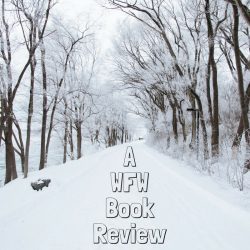
August 16, 2016
Guest Post: Why Two Writers Remember To Pay It Forward by Jess Lourey and Shannon Baker
If you know me at all, you know I believe in writers helping writers, and I love sharing stories like the one today. Meet Jessica (Jess) Lourey and Shannon Baker, who writing lives are linked together by kindness. Let them inspire you to reach out your hand to other writers. I know most of you do!
Please share stories of reaching out and reaching back! We’d love to hear them!
Amy xo
PS If you see funky formatting, I apologize. I’ve spent hours trying to correct it, but blogging time is up for the day. The glitch shall remain.
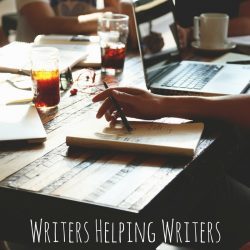
Writers Paying It Forward
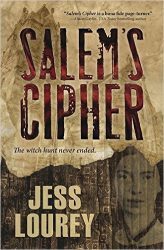 Jess here. I finished writing my first novel in 1998. Like many first novels, it was a thinly-disguised autobiography. The 25 agents I submitted to efficiently and justifiably rejected it. I gave up on fiction writing until a 2001 tragedy forced me back as a way to focus my spiraling brain. The result was May Day, my first mystery. I thought it might be okay. This was still pre-Internet, at least in the rural community where I lived, and so I’ d print out 20 query letters a day, fold them into an envelope, lick and stick the stamp, and drive to the post office. I received 423 rejections before I landed my first agent. In 2004, I (finally!) landed a two-book contract.
Jess here. I finished writing my first novel in 1998. Like many first novels, it was a thinly-disguised autobiography. The 25 agents I submitted to efficiently and justifiably rejected it. I gave up on fiction writing until a 2001 tragedy forced me back as a way to focus my spiraling brain. The result was May Day, my first mystery. I thought it might be okay. This was still pre-Internet, at least in the rural community where I lived, and so I’ d print out 20 query letters a day, fold them into an envelope, lick and stick the stamp, and drive to the post office. I received 423 rejections before I landed my first agent. In 2004, I (finally!) landed a two-book contract.To celebrate, I drove my country mouse self the three hours to Minneapolis to attend a Mystery Writers of America meeting. I almost chickened out a million times, but I made myself park my car and walk inside the church where the meeting was being held. On the way down the stairs, I *literally* ran into New York Timesbestselling author William Kent Krueger. I’d read all his books. He was a rock star to me.
My impact had thrown us both off balance, and he grabbed my hand to steady me. “Jess Lourey,” he exclaimed, when he got a good look at me. “My agent sent me a copy of your new book. May Day, right? I can’t wait to read it.”
I have since become friends with Kent, but I’ll never be able to convey to him the impact (not just physical) of that moment. It was my first foray into the world of writers, and he treated me like I belonged. It gave me the courage to keep climbing. Since that time, I’ve researched blurbs, workshop gigs, editing, and advice from more writers than I can thank. I sometimes think that writers are a generous, kinder group than the average because we work through most of the toxic crud in our books.
My takeaway is this: you never know who you touch or the butterfly effect of your generosity. It really does move mountains. Shannon, you’ve been brought back from the brink thanks to the kindness of writers, too, right?
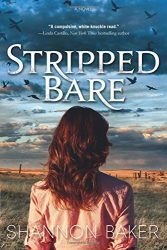
Yup. (Shannon here.) When Jess and I talked about this subject, we both mentioned some of the same people who grabbed our hands just as we were about to go under and yanked us back onto the boat. This is about one of them.
I’d just released my second book and in some kind of denial, I hadn’t done any promotion. Naturally, the book tanked. I mean, within days of release it still hadn’t climbed above the 1 millionth rank on Amazon. I happened to be at a big mystery readers convention, mingling with the hottest names in the business. I’d already turned in the third book of the series and was out of contract. But I’d started a book I’d been super-excited about before I realized what a failure I was. I’d already decided to scrap that book and any future writing projects, and take up competitive drinking.
On a walk along the beach, one of those successful mysteries writers took note of my low spirits and impulsively asked if I’d like for her to read my first three chapters and a synopsis. I didn’t think she was serious and didn’t respond until the next day when I asked if she meant it. She did, and she read the pages, and red-lined the synopsis, which was amazingly helpful. But more than that, she praised my pages. Single handedly, she gave me back my writing life. I finished the book, got an agent, and it was sold in a matter of months.
The lesson wasn’t lost on me. I vow to try to be supportive and helpful to other writers whenever I can. Because, as Jess said, you never know when that one word or gesture can save another writer’s dream
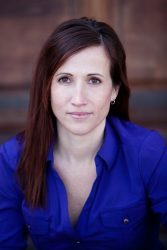 Jessica (Jess) Lourey is best known for her critically-acclaimed Murder-by-Month mysteries, which have earned multiple starred reviews from Library Journal and Booklist, the latter calling her writing “a splendid mix of humor and suspense.” She is a tenured professor of creative writing and sociology, a recipient of The Loft’s 2014 Excellence in Teaching fellowship, and leads interactive writing workshops all over the world.
Salem’s Cipher
, the first in her thrilling Witch Hunt Series, hits stores September 2016.
Jessica (Jess) Lourey is best known for her critically-acclaimed Murder-by-Month mysteries, which have earned multiple starred reviews from Library Journal and Booklist, the latter calling her writing “a splendid mix of humor and suspense.” She is a tenured professor of creative writing and sociology, a recipient of The Loft’s 2014 Excellence in Teaching fellowship, and leads interactive writing workshops all over the world.
Salem’s Cipher
, the first in her thrilling Witch Hunt Series, hits stores September 2016.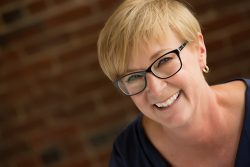 Shannon Baker writes the Kate Fox mystery series.
Stripped Bare
, the first in the series, features a sheriff in rural Nebraska and has been called Longmire meets The Good Wife. Baker also writes the Nora Abbott Mystery Series, a fast-paced mix of murder, environmental issues and Hopi Indians published by Midnight Ink. Baker was voted Rocky Mountain Fiction Writers’ 2104 Writer of the Year. She writes from the Colorado Rockies to the Nebraska Sandhills, the peaks of Flagstaff and the deserts of Tucson.
Shannon Baker writes the Kate Fox mystery series.
Stripped Bare
, the first in the series, features a sheriff in rural Nebraska and has been called Longmire meets The Good Wife. Baker also writes the Nora Abbott Mystery Series, a fast-paced mix of murder, environmental issues and Hopi Indians published by Midnight Ink. Baker was voted Rocky Mountain Fiction Writers’ 2104 Writer of the Year. She writes from the Colorado Rockies to the Nebraska Sandhills, the peaks of Flagstaff and the deserts of Tucson.
August 10, 2016
Guest Post: 4 Tips For Getting A Great Beta Read by Author Heather Young
What writer doesn’t benefit from a great beta read? Whether it’s your first novel or your tenth, feedback from one (or more) trusted readers who provide the feedback you need the way that you need it, is key.
Today we’re getting some great tips on how to get what you need from a beta reader from debut author Heather Young, whose novel THE LOST GIRLS was released by William Morrow on July 26th. Here’s what folks are saying about THE LOST GIRLS. “Beautifully written, THE LOST GIRLS will please suspense fans as well as those who love redemptive fiction. This is a big, bold, heart-wrenching book reminiscent of novels by Jodi Picoult, and is an excellent debut.” —Bookreporter.com
What are you beta reader experiences? What are your tips for making sure you get what you need? Share in the comments — and please welcome Heather Young to WFW!
Amy xo
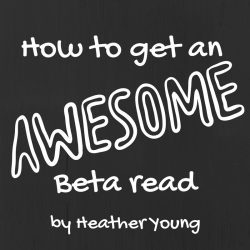
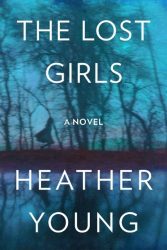 After five years writing The Lost Girls, I finally had a draft I thought was close. But I’d been staring at it for so long that I worried I was missing some huge, glaring flaw. What if my big reveal had been telegraphed in chapter three? What if my protagonist was unlikeable? What if the story dragged in the middle? I honestly didn’t think I could tell anymore.
After five years writing The Lost Girls, I finally had a draft I thought was close. But I’d been staring at it for so long that I worried I was missing some huge, glaring flaw. What if my big reveal had been telegraphed in chapter three? What if my protagonist was unlikeable? What if the story dragged in the middle? I honestly didn’t think I could tell anymore.
Then I heard about “beta readers” — people who read your book with a fresh eye and point out everything that’s wrong with it. So I went out and found a couple. And they did, in fact, point out flaws I hadn’t seen. For another six months I revised with their comments in mind, and the book was stronger for it. I’m now a firm believer that beta readers are an invaluable tool in the writerly toolbox.
However, beta readers occupy a tiny Venn diagram comprised of people who (1) have never read your book, (2) are willing to devote a big chunk of time to it, and (3) will give you an honest opinion that you value, which means you only get so many chances at them. After my own experiences getting and giving beta reads, I’ve come up with some thoughts on how to make the most of those precious opportunities.
First, of course, you have to find the people in that Venn diagram. Ideally, you’ll find both a writer and a non-writer. The writer will read through a craft lens and give you craft-based suggestions, while the reader will give you a sense of how your book would be received in the world. It’s a nice balance.
Then, once you’ve got them, it’s important to clearly define the parameters of what you’re asking them to do. After all, they’re going to spend a lot of time on this, and you want to make sure you get what you need from them. Here are some examples of things you might tell them:
1. Ask for Real-Time Commentary
When I do a beta read, the first thing I do is read the manuscript all the way through and write my unfiltered reactions in the margins. (I use TrackChanges for this, but a pen works just as well!) I point out where I’m confused. I record my emotional responses, such as whether I’m liking a character, whether a plot point feels surprising or contrived, and when I’m feeling mounting tension. I also note when I disconnect from the page, and anything else that springs to mind as I read. Not until the second read do I add more traditional editorial comments.
The writers I’ve done this for tell me that having those real-time notes is a tremendous help in gauging whether their writing is provoking the responses they want in a virgin reader. It does add an extra step, but because the data is so valuable, you may want to ask your readers to do the same.
2. Ask for an Edit Letter
It’s tempting to take your beta reader out for a drink and have her tell you what she thinks, but I found it was better to have it in writing. Not only could I refer to it later, but in my own beta reading, writing my thoughts down helps me distill them into something more coherent. Plus, if your beta reader doesn’t have to criticize your book to your face, she’ll be more willing to tell you about the Dead Zone between pages 75 and 130.
3. Keep Them Focused on the Big Picture
A beta read is about getting perspective on how your novel is working overall, not about the prose itself. This is a difficult distinction for some readers to grasp (especially the writers!), so tell them not to worry about typos, and definitely tell them whether you want line edits. I asked my beta readers not to do them, because I wanted them to look only at structural, thematic, pacing, and character issues. But I have done them in my own beta reads, and you may want them – or you may want them from some readers and not from others.
4. Don’t Ask for Specific Insights
I don’t recommend asking for specific feedback up front, such as whether a particular subplot is working or whether your protagonist’s actions are believable. That’s going to skew the way they read, and I think the most helpful beta reads are utterly fresh and unbiased by the writer’s worries. You can always ask those questions after they’ve read it.
Finally, when it’s all over, send your beta readers a present. Doing a beta read takes a lot of time, and it’s of enormous benefit to you, so a bottle of tequila or a tote bag is definitely in order. And don’t forget to thank them in your acknowledgements! Trust me, they’ll look!
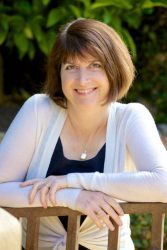 Heather Young grew up in Maryland, but has lived in the San Francisco Bay Area since 1991, with her two teenaged children and her husband. She’s also strongly rooted in the Midwest: her parents grew up in small Iowa towns and met at the University of Iowa. Though they raised their children in the Washington, D.C., area, they brought them to Minnesota every summer. It’s this emotional connection that Heather drew upon to create the characters, events, and settings in THE LOST GIRLS.
Heather Young grew up in Maryland, but has lived in the San Francisco Bay Area since 1991, with her two teenaged children and her husband. She’s also strongly rooted in the Midwest: her parents grew up in small Iowa towns and met at the University of Iowa. Though they raised their children in the Washington, D.C., area, they brought them to Minnesota every summer. It’s this emotional connection that Heather drew upon to create the characters, events, and settings in THE LOST GIRLS.Heather received an MFA from the Bennington Writing Seminars in 2011. When she’s not writing, she loves biking, hiking, skiing, and reading books she wishes she’d written.
Twitter: @HYoungwriter
Facebook: www.facebook.com/heatheryoungwriter
Website: www.heatheryoungwriter.com
August 8, 2016
Louise Miller Cooks Up A Delightful Debut
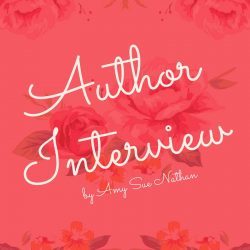
I can’t quite believe it but I haven’t posted an author interview since January. I guess that’s what happens when I’m writing a book. The reading, thinking, and researching time that it takes to conduct the kind of interviews I like to post, well, no time. No time for cooking or laundry either, for that matter. While I was thrilled with the quality of the WFW guest posts, and am having oodles of fun with my writing life posts, when I read Louise Miller’s debut novel, THE CITY BAKER’S GUIDE TO COUNTRY LIVING, I couldn’t wait to interview her and get back on my journalism horse. Plus, as you know, I turned in my novel. So there’s more time for EVERYTHING. (Including writing book four!)
THE CITY BAKER’S GUIDE TO COUNTRY LIVING has it all, in my opinion, including a fabulous cover, that says “Sit. Read. Eat Pie.” And now, we all get to know this story’s back story! What fun! And, what a great way to launch into a new season of author interviews (and I have quite a few coming up).
Please congratulate Louise on her book launch which is TODAY and click on her links! She’s a real life pastry chef. A pastry chef who writes! Why didn’t I think of that?
Amy xo
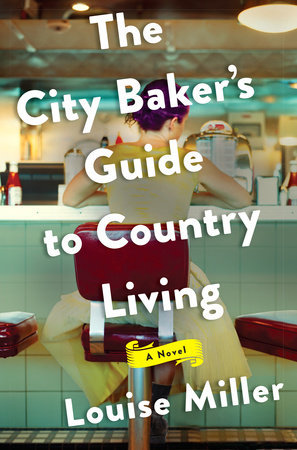
Author Interview: Louise Miller Cooks Up A Delightful Debut
Amy: Louise, thanks for joining us on the Women’s Fiction Writers blog, and congratulations on the release of your debut novel, THE CITY BAKER’S GUIDE TO COUNTRY LIVING. If I haven’t said it enough, I adored this book so much I even read it while pedaling away on the stationary bike. So tell us how the idea for this story was sparked for you? Is it a moment you remember?
Louise: Thank you so much, Amy! I’m so happy that you enjoyed it! And I am delighted to be on the Women’s Fiction Writers blog—I’m a longtime fan.
The first spark of the story came from a real-life experience. I entered an apple-pie baking contest at a county fair on a whim. After dropping the pie off, I went on to enjoy the fair. Hours later, when I returned to the craft hall to see who had won, I found scores of bakers silently watching the judges eat—there were so many entries that year that the judging went overtime. I had had no idea until that moment that the contest was so competitive. For years I couldn’t shake the image of all of those bakers staring through a glass wall and the feeling of tension in the room. During those years I also spent a lot of time contemplating whether or not I would be happy living in the country. The combination of those two things inspired me to write THE CITY BAKER’S GUIDE.
Amy: I know you’re a pastry chef, so (you are probably used to this question) how much of your real life was the springboard for your novel? If there are elements of you in here, tell us what it was like to separate fact from fiction.
Louise: The plot is entirely fictional—I promise, I have never lit any of my work places on fire or had any affairs with any of my bosses—but there are so many little details that I pulled from my real life experiences as a pastry chef working in a professional kitchen. Other than baking, there are a few other elements of me in the novel. I do play old-time banjo, and have a great love of traditional music. And I am in love with Vermont.
One of the things that I did to separate myself from Livvy was to make her a much more accomplished chef and a better banjo player than I am! But really, it was easy to separate fact from fiction because the characters and plot are entirely made up. There is as much of me in the elderly innkeeper Margaret or Tom the dairy farmer as there is in Livvy, the pastry chef.
Amy: What was the writing process like for you? Do you plan or do you “pants?”
Louise: Oh, I wish I were a planner. I want to be a planner. But I enjoy the process of discovery too much along the way. Every time I have made an outline my characters laugh and insist on a different path. I do start with a strong feeling of the main character, the “inciting incident” and what I think will be the end, so I know what direction to head in.
Amy: Can you share with us some of your “journey to publication” story?
Louise: My whole journey to publication is filled with kismet! Back in 2010 I signed up for my first writers’ conference—Grub Street’s Muse and the Marketplace conference in Boston. For an additional fee they offered the opportunity to have a manuscript consultation with an editor or an agent. I knew I wasn’t ready for an agent—I had only written around 25 pages—so I signed up with an editor, the amazing Pamela Dorman. To my surprise she liked the pages, and asked to keep in touch!
Fast-forward three years—the amount of time it took me to finish the first draft. During this time I would periodically make myself write to Pam and let her know how I was doing with the manuscript. Writing these notes was horribly embarrassing. There is nothing worse than writing to an editor you admire to let her know that Nope-still haven’t finished that novel… But I knew that I would never forgive myself if I just let the connection fade. Knowing that Pam had seen something in my pages spurred me on when I was tempted to give up writing and devote all of my free time to eating popcorn and watching Project Runway. I returned to her encouraging words again and again as I pushed myself to finally finish the damn draft.
Pam was the one of the first people I told when I was accepted into GrubStreet’s Novel Incubator program. Finally some real news to report! I had finished my first draft AND anticipated being finished revising by the end of the program. One year later, in the winter of 2014, the night I finished the final revision of THE CITY BAKER’S GUIDE–two hours after I hit “save” and closed my laptop, to be exact–I received an email from Pam. She had just finished editing a novel she had acquired from another Novel Incubator alum (Patty Park’s wonderful RE: JANE) and wondered how my revision was going, and said she would like to read it when it was ready…
In the meantime I started the agent querying process. Again, I went to the Muse and the Marketplace conference, this time to meet with agents. I had a consultation with an agent whose first words to me were “not my cup of tea…” But I had paid for a twenty-minute consultation, so I stayed put, and we ended up having a great conversation. At the end of our meeting she recommended I query a colleague of hers at ICM, Alexandra Machinist, who is now my agent!
So my advice to any writer in the pre-publication process is this: show up, take a chance, and be friendly, follow up—you never know who you are going to meet and how things will work out. Until the day of the sale I never imagined I would be publishing with Pamela Dorman Books—it truly is a dream come true.
Amy: What’s your best advice for aspiring authors of women’s fiction?
Louise: Write what you love. Write the story that fills you up—the story you want to read. Don’t worry about the market or genre or any of the business stuff. There will be plenty of time for all of that later. I know it can be so tempting to read all the publishing news and to follow agents on Twitter, and I highly recommend doing all of those things when you have a finished manuscript ready to shop, but until then let yourself be just a writer. That creative time where you can take risks and explore is so important. Don’t let the business voices in too early.
Amy: And if you’re game, tell us if the term “women’s fiction” bothers you. You won’t be surprised that it doesn’t bother me at all. 
July 23, 2016
The Writing Life #13
Lucky #13! It’s been a couple of weeks since I shared a what’s going on in my writing life, and that’s because I’ve been buried in the writing life. Isn’t that the best reason?
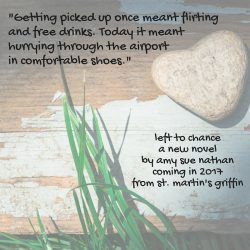
This week I wrapped up my edits on my third novel, Left To Chance, and sent them off to my editor. I’m thrilled with the way the story and characters have evolved, the subtle changes that made a big difference and the big changes that kicked the story up a notch. My main character’s name is Teddi Lerner—and I like Teddi more than I’ve liked Evie Glass from The Glass Wives or Izzy Lane from The Good Neighbor. It doesn’t even feel like I’m being disloyal, or choosing a favorite child. Maybe this happens with every novel, I don’t know. I do know that Left To Chance has been the most fun and challenging book so far. And strangely, it was the most personal. I didn’t expect that at all. I slipped into Teddi’s shoes more completely than I’d thought possible.
I am excited to be able to share it with you in the coming months!
I approached the edits in layers, tackling each issue somewhat separately, or something big and small together, as I worked my way through the entire manuscript. Then I went back to page one again to address something new. With each pass through the pages, I was able to make sure that the dominoes fell the way they should, that each character and plot point was in sync.
During on of my last passes (I lost count at #4) I had an idea for the ending. I always knew how the book was going to end, but the details changed, the words weren’t quite right. I then reworked the ending for days (just ask my friend who read every version) without writing or editing anything else.
I’ve realized through the years that I have to remain flexible when writing and editing. Just because I wasn’t at the end of the book didn’t mean I shouldn’t jump there, stop everything else, and rewrite the ending. And when I say the ending I mean the final scene. I rewrote that puppy completely, and then in part, at least a dozen times. It wasn’t an awful ending before now, I mean, I had submitted the book to my editor in March. I wouldn’t have done so with an ending I hated, but it didn’t seem like an ending I’d write. Not until now.
But, even after two novels, the trepidation never ends! I hovered my finger over the send button and counted to ten about twenty times before I actually sent it off! Should I read it one more time? Tweak another paragraph? Delete another word? Read it backwards? Out of order? Upside down? NO!
The truth is, there is time for more changes. I could have another round of edits coming, although I wouldn’t expect anything major at this point. After final major edits, come copy edits, where a different editor goes through the book with a magnifying glass looking for errant commas, misused words, inconsistencies, and research issues. That’s really the last time an author can make changes — because some times we catch things on our own too. After that we get down to the nitty gritty with page proofs, printed pages that look like your book, so you can make sure all the copy edits have been made, and you have a final chance to catch a dropped word or printing error. Yes, things slip by. All books have an error or two, but hopefully nothing that impacts the story.
One of the best things about sending off the manuscript to my editor is TAKING A BREAK FROM THE STORY. I’m still loving Left To Chance, but nothing improves a story more (for me) than time away from it.
Can’t wait to share whatever’s next! Which I hope is news that we’re close to sending Left To Chance into production!
***
To celebrate finishing the edits on #3, here’s a Goodreads Giveaway for my debut novel, THE GLASS WIVES! Already read it? Enter anyway and give your prize as a gift if you win! The books are coming directly from me, so you can give it (or keep it) signed! (Check out the enter link below)
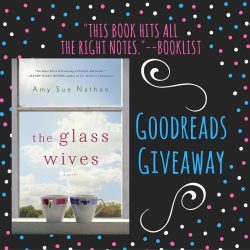
Goodreads Book Giveaway

The Glass Wives
by Amy Sue Nathan
Giveaway ends July 30, 2016.
See the giveaway details
at Goodreads.
***
So what happens when there’s a break, a gap, time off from one novel? There’s a little bit of celebrating of course — it’s important to acknowledge every step along the way. I’ll be celebrating on Monday with my friend, author Pamela Toler, who has her own celebrations (books, agent, life, oh my!).
I’m also excited to spend time now on Book #4. You know what I’m talking about. Boop. And Hannah. And their adventures and story that take place in South Haven, Michigan. I’ve been to South Haven twice so far, and interviewed an amazing 84-year-old woman who grew up there and lived the life I sort of had already imagined for Boop! More about that as the process moves along, but needless to say I can’t wait to go back and spend another day with her on the beach (any day except Thursday. Thursday is her golf day. ‘Natch.).
Here’s a look at a bit of South Haven on a sunny day!
Click to view slideshow.
***
How is the summer treating your writing life? Is it slower or faster? Does your life experience a schedule shift? Are you outside not inside? (I’m indoorsy, folks.) How does that impact what you do with your work?
Have some great interviews and guest posts scheduled for August, and even more as we head into September and October.
Amy xo
July 15, 2016
“Your Author Brand” Mini Course by Dana Kaye
That’s the big question, isn’t it? As an author, WHO ARE YOU?
Today we have a mini-course (available only through August) by Dana Kaye, of Kaye Publicity, which teaches you how to pinpoint your author brand and then, offers tips for getting that brand into action. Dana is the perfect person to teach this course, not only because it’s what she does for a living, but because her first book, YOUR BOOK, YOUR BRAND comes out in September, when she’ll be back again on WFW with more tips and insights.
Just click the photo above and register for the course. I did. It’s easy, it’s engaging, and it’s full of great information. Even after thinking I knew my author brand (humorous women’s fiction that explores deeper themes) I’m really encouraged and excited to hone that even more. There’s always more to learn in this business, that’s for sure.
What’s your author brand now? Share it in the comments below and then come back and tell us how you’ve adapted or changed it, or what you’ve learned.
I know what I’ll be doing tonight!
Amy xo
July 12, 2016
WFW Giveaway! 3 Novels, 1 Winner
Here’s a chance to win THREE novels perfect for your summer TBR list! A winner will be chosen (US addresses only) on July 20th! There are four ways to enter! Good luck!
Amy xo
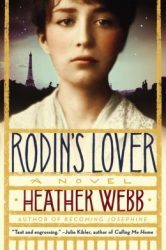
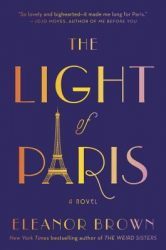
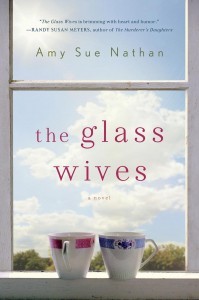
July 11, 2016
The Light of Paris by Eleanor Brown
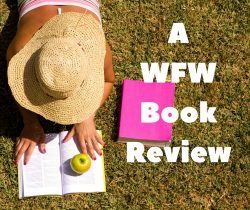
 It’s been a long time since I’ve written a WFW book review, and I’m beyond excited to tell you about The Light of Paris by Eleanor Brown—from a writer’s perspective, of course. As you recall, I’m not much into “book report” reviews, and since I don’t finish reading books I don’t like, you can assume anything I finish, tweet, FB, or review, I liked or loved.
It’s been a long time since I’ve written a WFW book review, and I’m beyond excited to tell you about The Light of Paris by Eleanor Brown—from a writer’s perspective, of course. As you recall, I’m not much into “book report” reviews, and since I don’t finish reading books I don’t like, you can assume anything I finish, tweet, FB, or review, I liked or loved.
Much easier than counting stars.
The Light of Paris a story of lives and love, of families and traditions, told in two time periods and on two continents.
In present-day Chicago we meet Madeleine, who’s a sympathetic main character right away. (This is what writers of women’s fiction strive for, yet not all achieve.) I was rooting for Madeleine right away, before I even had a clear sense of everything that was wrong in her life or why. I wanted her to be okay. No, I wanted her to be more than okay. Then, Madeleine takes a stand and takes risks. As an author, Eleanor Brown is able to capture both the excitement and fear Madeleine experiences as she goes home to stay with her difficult (to say the least) mother in order to move forward in her own life. So much conflict!
We also meet Madeleine’s grandmother Margie as she embarks on a journey (literal and figurative) to Paris. It’s the 1920s. Margie has also left a unhappy life behind to unwittingly discover the life she wants to live. As Madeleine learns about her grandmother through journals, we learn along with her, both by being in Paris with Margie, and through Madeleine’s observations, which also are reference in the present-day chapters. This was a fascinating POV for me to read, as I felt both like I was in Paris with Margie and in Madeleine’s head. The two stories intertwine as Madeleine learns so much about herself, uncovers family secrets, and is able to embrace the present, thwart traditions, in a way that was difficult for her grandmother to do so many years before.
It’s not surprising that the language is lovely and descriptions are vivid — that they evoke emotions in a way that is clearly finessed, yet in no way forced.
Like millions of readers, I’ve been waiting for Eleanor’s new book since I fell in love with her lauded debut, The Weird Sisters, in 2011.
Here’s my copy! I also have a paperback that’s packed away!

I also met Eleanor “by accident” at The Printer’s Row Lit Fest in Chicago in 2011 (OMG FIVE YEARS AGO) when I was there as a fan and a blogger, at a panel of women authors, and Eleanor was in the audience. She and Meg Waite Clayton were so inclusive that I felt like an author even though I had an agent but it before my debut novel even sold to St. Martin’s Press. My friend and critique partner, Pamela Toler will tell you her she witnessed first-hand me go all fangirl on Meg and Eleanor. I don’t think any of us look like this anymore — but I love this photo because you can totally see the crazy fangirl in my eyes!
Am I wrong? (Just ask Pam. Not wrong.)
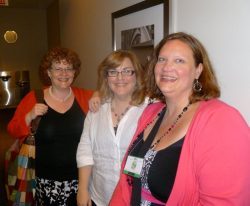
Amy xo
Women's Fiction Writers
- Amy Sue Nathan's profile
- 543 followers



